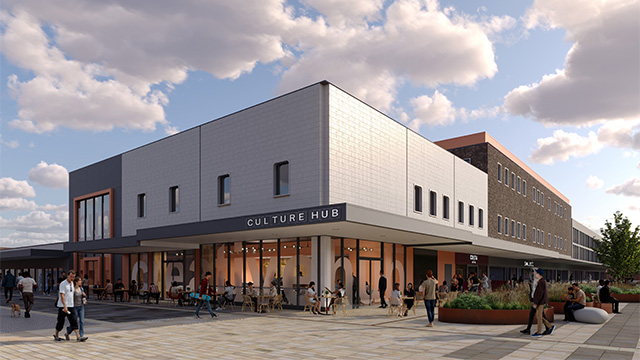COMMENT As the property markets started to demonstrate a recovery earlier this year, one of the more interesting headline statistics was that retail outperformed offices for the first time since 2016, returning 1.7% over the second quarter, compared with 1.4% in the office sector.
To some extent this is not surprising. By the end of the second quarter, shops had reopened following the lockdown in early 2021, while most offices were still not meaningfully occupied. But on the other hand, an outcome of the pandemic has been an acceleration in the growth in online sales and this could have been expected to weigh heavily on physical retail performance.
Of course, a more detailed look at the retail figures reveals a much more nuanced picture that supports both these statements. Retail warehouses and supermarkets outperformed, returning 3.7% and 3.3%, respectively. In contrast, standard retail units in the South East returned 0.9% and shopping centres remained in negative territory at -1.3%. Over a 12-month period, this polarisation was even more stark.
As an essential retailer and one with a relatively low online penetration, the resilience of a supermarket is easy to understand. The more interesting story lies behind the strength in retail warehousing. MSCI performance numbers suggest that the performance in this sector has been driven by investor demand. Over the last 12 months, yield compression has had a positive impact of 3% on capital values.
Value and experience
We believe there are several reasons why retail warehouses have become an attractive investment proposition. The roots lie in our thematic research, which has long stated that resilient retail locations will be those that offer convenience, value, experience or ideally a mix of two or three. We are seeing this being borne out in the occupational story in this segment.
Footfall in retail parks has been more resilient throughout the pandemic. By early summer 2021, Springboard reported footfall comparable to pre-pandemic levels, but it remained 25-35% lower in high streets and shopping centres. This has been reflected in the occupational fundamentals. Vacancy on retail parks stands at 6.1% in the MSCI quarterly index, compared with 10.7% in shopping centres. Furthermore, occupiers have remained acquisitive. During 2020, 701 new stores opened on retail parks, according to data from Savills, and over the first four months of this year – during a period of national lockdown – a further 376 opened.
This reflects the drive-to convenience of edge-of-town retail parks as well as the consumer appetite for value. Aligned with the latter, Savills reports that 40% of units taken in the early months of this year were by value-orientated brands, with the most acquisitive retailers in 2020 and 2021 including Lidl, Aldi, B&M, Home Bargains and Sports Direct. Over time, we see opportunities for investors to tap into the demand for experiences at retail parks, whether through retailers offering additional services, such as sports’ activities and dog grooming, or embracing pop-ups with local brands, aligning with a growing emphasis on community and localism.
Polarisation in performance
While the occupational story is attractive, we believe that retail parks stand to benefit from the growth in online retail and that this is also underpinning investor demand. The attraction of retail parks in the context of online retail is twofold.
First, retail warehousing units are of increasing importance in online fulfilment, as the availability of car parking supports the servicing of click-and-collect orders and the large unit sizes mean that stores can become partial warehouses used for last-mile delivery. Second, there is a nascent trend to repurpose parks that are well located, close to large urban centres, for urban industrial units to service growing online demand. We expect to see accessible retail parks in densely populated locations repositioned to provide more of a combination between conventional retail space and online fulfilment, whereby urban logistics units sit alongside retail units.
We have been active in this sector and have both operational and repurposing strategies across our portfolios. However, despite the clear case for investment in retail warehousing, there are still many pitfalls for investors. We expect increasing polarisation in performance within the retail warehousing segment. Location is still king regardless of the long-term plan, with a particular focus on catchment and accessibility. The specification of the park must be correct to meet user needs for urban logistics or online fulfilment, including yard depth and loading configurations. For those looking to employ an operational strategy, current rental levels are critical. While a greater proportion of rents in this segment are thought to have been rebased than other parts of the retail sector, there is still significant over-renting on many parks. Nevertheless, for those investors that get this right, and have a clear understanding of user demands for this sector, there are rewards to be found.
Tim Munn is chief investment officer at Mayfair Capital











